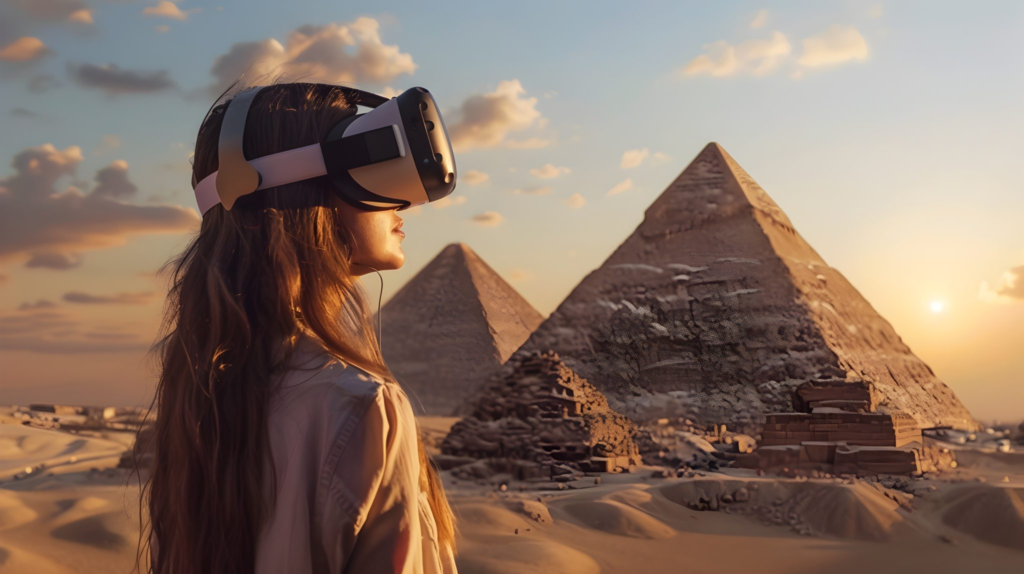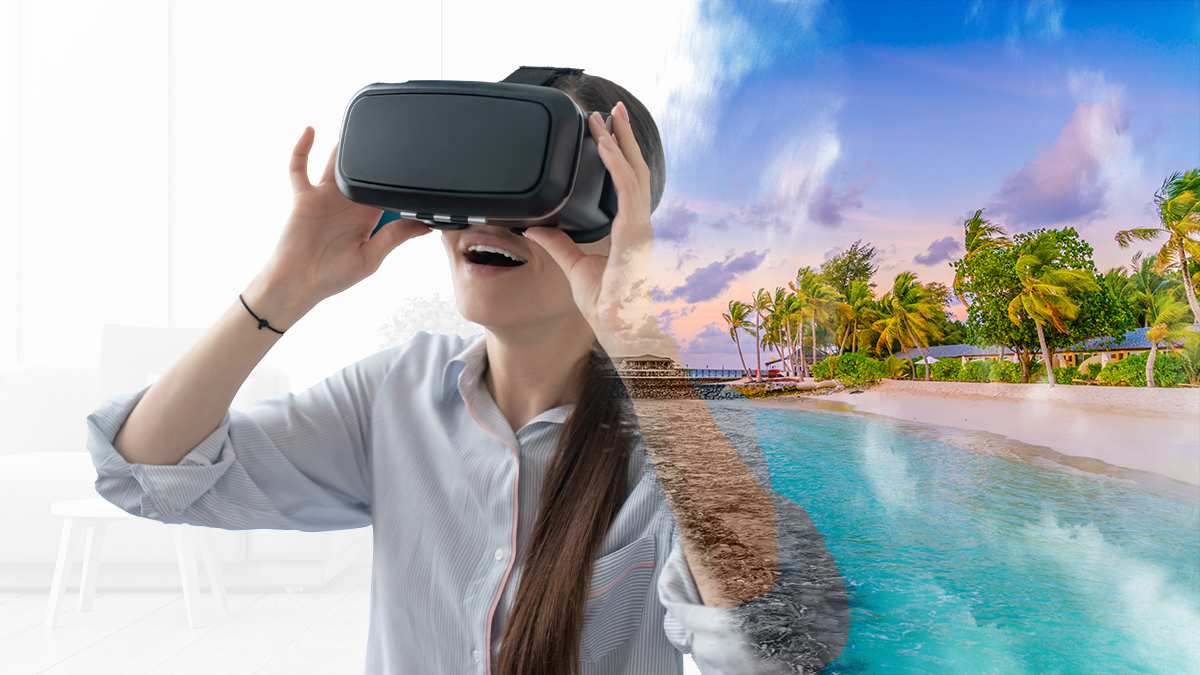AR and VR Enhancing Tourism Experiences in Oman’s Heritage Sites Imagine stepping into a centuries old fortress and instantly being transported through time. With augmented reality (AR) and virtual reality (VR), Oman’s ancient forts, museums, and archaeological wonders are no longer silent stone. They are living stories waiting to be explored.
Bringing History to Life
AR overlays digital visuals onto the real environment. Imagine animated battle scenes playing out on fort walls or traditional craftsmen appearing in the courtyard to demonstrate their art. VR on the other hand allows tourists to fully immerse themselves in historical reconstructions, walking through bustling Omani souks from centuries ago or experiencing life in a desert citadel at its peak. These technologies give context, narrative, and emotion to physical sites.
Deepening Cultural Understanding
Tourists often read plaques or listen to audio guides, but AR and VR offer richer experiences. Viewers can meet digital avatars of historical figures, hear their stories in recreated voices, and explore environments that no longer exist. The result is a deeper appreciation of Oman’s traditions, architecture, and the lives of people who shaped its heritage.
Enhancing Accessibility and Engagement
Not everyone can walk up steep fort staircases or navigate sprawling archaeological grounds. AR and VR break those barriers. Visitors can digitally ascend towers, explore vast ruins from comfortable benches, or tour replicas of areas that are off limits. Interactive elements like quizzes, puzzles, or guided quests add an element of fun and encourage active learning.

Supporting Local Communities
Creating AR and VR content involves local historians, artists, storytellers, and technologists working together. Their input ensures accuracy, respect for tradition, and authenticity in representation. The process also brings new jobs, strengthens community pride, and highlights regional narratives that might otherwise be overlooked.
Boosting Tourism and Off Season Appeal
Enhanced digital experiences give Oman’s heritage sites a fresh appeal to both local and international travellers. VR previews online invite potential visitors to explore before booking a trip, and AR enhanced tours keep visitors engaged longer, prompting recommendations and repeat visits. In quieter seasons, virtual access can maintain interest and generate revenue.
A Safe Flexible Visitor Experience
Global travel disruptions, extreme heat, or physical limitations can affect tourism. AR and VR offer resilient alternatives. Virtual tours during outdoor site closures or AR guided indoor experiences when weather is harsh keep the experience alive. Tourists can personalise pace, language, and depth to suit individual needs.
Combining Technology with Tradition
While high tech, these experiences are rooted in Omani authenticity. Digital visuals reflect local dress, architecture, and language. Storytelling remains personalised, often with voice overs by locals in Arabic and English. Visitors feel culturally connected, not alienated by technology.
Real World Applications in Oman
Imagine visiting Nizwa Fort with an AR app. Aim your phone and watch the watchtower materialise as it was in 1700, buzzing with guards and traders. Or slip on a VR headset at the Bait Al Zubair museum to stroll through a 19th century majlis, hear traditional poetry recited, and handle digital replicas of silver khanjars and jewellery. At Bahla Fort, AR signage reveals secret escape routes and water systems archaeologists discovered. These immersive layers turn static ruins into dynamic, memorable encounters.

What Visitors Love
Feedback shows tourists enjoy the sense of wonder and storytelling AR and VR bring. They feel more connected because learning is not just reading historical facts but walking into them. Families and younger travelers especially appreciate the interactive fun that blends education with entertainment.
Challenges and Future Potential
While powerful, AR and VR require planning. Producing accurate 3D content takes time and investment. Devices need maintenance and staff training. Galleries must ensure digital experiences do not overshadow the physical beauty of the sites. But as equipment improves and costs drop, the potential grows with fully multilingual tours, location triggered stories, digital pilgrimage trails, and even collaborative experiences linking museums and outdoor forts.
The Human Heart of High Tech
The magic of AR and VR tourism in Oman lies not just in pixels and headsets but in human connection. Technology amplifies stories of bravery, craftsmanship, faith, and daily life. It invites empathy and wonder. It makes history personal. Visitors do not just see Oman’s heritage, they feel it, understand it, and cherish it.
A New Era for Omani Heritage Tourism
Augmented and virtual realities are ushering in a transformative era for tourism in Oman. Heritage sites become storytellers. Culture becomes immersive. Visitors depart enriched not just with memories of what they saw but with shared experiences that resonate deeply. By breathing digital life into ancient stones, Oman is crafting unforgettable journeys that honor the past and inspire the future.
Do follow Gulf Magazine on Instagram.
Also Read – Biometric Authentication in Oman Banking: Transforming Security and Customer Experience



